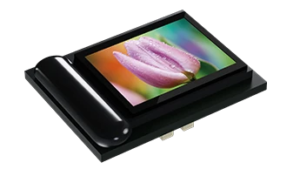Have you ever wondered how such small devices—like smart glasses or viewfinders—can show such clear and detailed images? That’s possible thanks to micro display technology. These tiny but powerful screens are behind many modern devices that need high-quality visuals in compact spaces.
In this blog, we’ll explain what a micro display is, how it works, and where you’ll find it used today.

What Is a Micro Display?
A micro display is a very small screen, often less than 1 inch in size, that can show high-resolution images. These displays are built using technologies like LCD, LCoS, and OLED, with micro OLED being the most advanced.
Despite their size, micro displays are known for their sharp image quality, fast response time, and ability to work in lightweight devices.
👉 If you’re interested in the latest micro display options available, check out the top solutions on the market.
How Micro Displays Work
Micro displays work by packing thousands—or even millions—of pixels into a tiny screen space. These screens are usually placed very close to your eyes, like in a VR headset or camera viewfinder.
They are often mounted on silicon chips (in the case of micro OLED) and include backlighting or self-emitting pixels depending on the technology used.
Types of Micro Display Technologies
Here are the main types of micro display technologies used today:
| Technology | Description | Best For |
|---|---|---|
| LCD | Liquid crystal display, needs a backlight | Projectors, headsets |
| LCoS | Liquid crystal on silicon, sharp but reflective | Near-eye displays, HUDs |
| Micro OLED | OLED on silicon, self-emitting, ultra clear | AR/VR glasses, cameras |
Among these, micro OLED stands out for its deep blacks, high contrast, and low power use.
Where Are Micro Displays Used?
Micro displays are used in many industries and products. Here are some examples:
AR & VR Headsets: For immersive 3D visuals close to the eyes.
Smart Glasses: Used in industries, sports, and healthcare.
Digital Cameras: In electronic viewfinders (EVFs).
Medical Devices: For displaying data in surgical tools.
Heads-Up Displays (HUDs): In cars and aircraft.
Military Equipment: For helmets and scopes.
Because of their tiny size and clear output, they are perfect for any compact visual device.
Benefits of Micro Display Technology
Why do companies use micro displays in their devices? Here are some top benefits:
High Resolution in Small Space: Excellent clarity even at under 1 inch.
Lightweight: Ideal for wearable technology.
Low Power Use: Extends battery life.
Fast Response Time: No delay or blur, even during motion.
Sharp Colors and Contrast: Especially with OLED versions.
These features make micro displays the first choice for high-performance, compact screens.
Micro Display vs Regular Display
Let’s compare micro displays with traditional screens:
| Feature | Micro Display | Regular Display |
|---|---|---|
| Size | Under 1 inch | 4 inches and above |
| Pixel Density | Extremely high | Standard |
| Power Efficiency | More efficient | Varies |
| Use Case | AR/VR, viewfinders, HUDs | TVs, phones, monitors |
Micro displays are not meant to replace your phone screen—but they are essential in small devices where space matters most.
Micro OLED: A Premium Type of Micro Display
The most advanced version of micro displays today is the micro OLED display. It uses organic light-emitting diodes and offers the following advantages:
True blacks and perfect contrast
Self-emissive pixels (no backlight needed)
Super compact and ultra-clear
It’s now a go-to choice for brands building AR glasses, camera EVFs, and military vision systems.
The Future of Micro Display Technology
The demand for smaller, lighter, and smarter devices is growing fast. As a result, micro display technology is also evolving. We may soon see it used in:
Smart contact lenses
AI-driven headsets
Portable medical diagnostics
Augmented work environments
As screen sizes shrink and tech becomes more wearable, micro displays will become even more common.
Final Thoughts
The micro display may be small, but it plays a huge role in modern technology. It allows us to enjoy crystal-clear visuals in gadgets that fit in our pockets—or even on our faces. With ongoing innovation, these displays are shaping the future of how we see the world through tech.
If you’re exploring the latest options in micro display or micro OLED technologies, make sure to choose trusted sources and high-quality components.